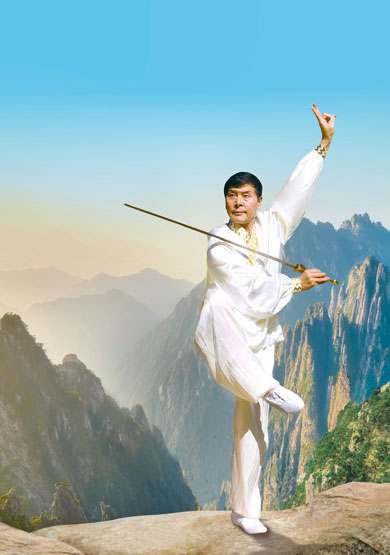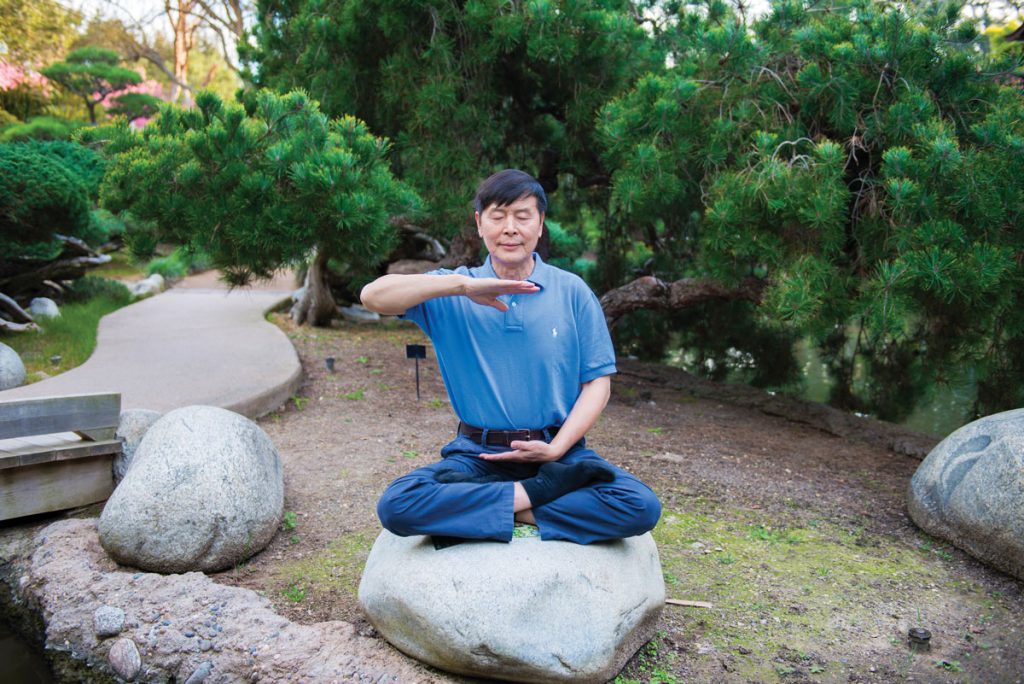“The ultimate goal of martial arts is to stop evil and promote goodness.”
—Youfu Li
Most of us learn about Chinese martial arts from novels, movies, and TV series. We hold our breath with amazement as we watch action heroes display unusual skill and agility on screen. We may wonder, are these shots products of fantasy or are they based on authentic martial arts?
To get some answers, we talked to martial arts master Youfu Li. A former martial arts champion, he is now the head judge for the NTD International Traditional Chinese Martial Arts Competition.
The competition, which will be returning in August 2022 to New York state, aims “to promote traditional Chinese martial arts, propagate martial morality, and revive the true, divinely inspired traditional Chinese culture.”
Li talked about the meaning of traditional Chinese martial arts, revealed secrets of these ancient practices, and shared how we can benefit from them today.

What is the meaning of traditional Chinese martial arts?
These days, many people who practice martial arts don’t understand authentic Chinese martial arts. Yet this art form has a long history in China, evolving from fighting techniques into cultural heritage.
The term for martial arts in Chinese is “wu shu,” which carries deep significance. The first word, “wu,” consists of two components: “stop” and “ge” (a type of weapon). In other words, “wu” means to stop violence with a weapon. This term originated with the Yellow Emperor, the first emperor of China.
The concept of stopping violence is essential to authentic martial arts. The ultimate goal of martial arts is to stop evil and promote goodness. Therefore, when a master chooses his disciples, he must look for people with good character and integrity.
The English term for martial arts indicates that these practices constitue an art form. Is this an accurate translation?
Wu shu is indeed an art form. It can bring the audience beauty and enjoyment, which is one of the reasons why Chinese martial arts are popular around the world. I once met a Czech boy in Europe who practiced the “Wusong De-Shackles Boxing,” a boxing technique that was almost lost in China. He performed it quite well. When I asked how he learned it, he said that a German teacher had taught him. This experience reminded me that Chinese martial arts are loved by people worldwide.
As history developed and new weapons emerged, the combat use of martial arts began to decline, gradually becoming a kind of cultural tradition.
Today’s martial arts consist primarily of a set of routines. It’s like performing a show—there must be a beginning and an end, as well as factors like rhythm, speed, attack, and defence. After watching a complete set of exercises, people will find martial arts pleasing to the eyes. This is especially true when watching experienced practitioners perform. Their movements showcase beautiful rhythm and flow, offering viewers a pleasant feeling.

What can you tell us about the martial arts sequences we see in movies and TV shows?
The Chinese martial arts in movies and TV shows may be exaggerated, but they aren’t necessarily fictional. Through practicing martial arts, people can indeed develop extraordinary strengths and abilities.
The practice of martial arts requires the body to achieve full coordination so that all the forces in the body concentrate in one direction. This coordination will lead to great strength.
Moreover, practicing martial arts trains not only the body but also the mind and spirit. My first teacher taught me that people who practice martial arts aren’t afraid of evil. Those who practice to a high level will naturally have self-confidence and courage. We can see this in the chivalrous spirit depicted in literary and artistic works. When martial artists encounter injustice they can lend a helping hand.
What can the wisdom of traditional Chinese martial arts teach us?
The goal of traditional martial arts is to make the opponents lose their ability to fight, thus avoiding unnecessary violence. In Sun Tzu’s classic text The Art of War, the highest military strategy is “to subdue the enemy without fighting.”
Han Xin, the brilliant general from the Han Dynasty, understood this principle. As a young man, he suffered the humiliation of crawling under a bully’s legs. Since he was highly skilled in martial arts, why did he choose to accept this ordeal?
Han Xin would likely have defeated the bully in a fight, but he could have seriously injured or even killed him, which meant he would be punished by law. Han Xin figured that such a frivolous dispute wasn’t worth the trouble, so he endured this humiliation to avoid a risky situation.
Han Xin later became a general and gained many victories. During the final battle with his opponent Xiang Yu, he drove the latter to the Wujiang River. Han Xin had a clear advantage in military strength and could have attacked his enemy but he would have had to sacrifice many of his soldiers in the process.
Instead, he came up with a non-combative solution, sending some of his men to approach the enemy camp at night and sing tunes from Xiang Yu’s soldiers’ hometown. The sad music evoked homesickness in the latter, leading many to defect. Seeing his imminent defeat, Xiang Yu committed suicide.
With this strategy, Han Xin accomplished the highest goal of martial arts—he won a battle without moving a single soldier.
Each of us will encounter various conflicts and disputes in life. If we evaluate situations by the principle of avoiding harm to ourselves and others, problems may be easily resolved.

Many people want to learn martial arts to keep fit. How do they choose martial arts suitable for their physical conditions?
There are many types of traditional Chinese martial arts, and each has its own characteristics. People of different ages and with various physical conditions can find martial arts that are suitable for them.
Young people can practice the external fist styles include Chang Quan, Ba-Chi Quan (Eight Extremes Fist), and Shaolin, etc. Older people can practice the internal fist styles, such as Xing-yi, Ba-gua Palm and Standing Stance, or just a few basic movements. Moreover, some methods are best suited for girls, and others are best suited for boys.
Regardless of the type of martial arts, as long as they’re traditional they can have the effect of strengthening the body. That’s because martial arts consist not only of physical exercise but also have meditative exercises that pay attention to regulating breathing and qi (energy). While sitting in meditation, the human body is relaxed, so the meridians and blood vessels expand to nourish the body, thus reducing the heart’s workload.
“Each of us will encounter various conflicts and disputes in life. If we evaluate situations by the principle of avoiding harm to ourselves and others, problems may be easily resolved.”
—Youfu Li
Register Online Now